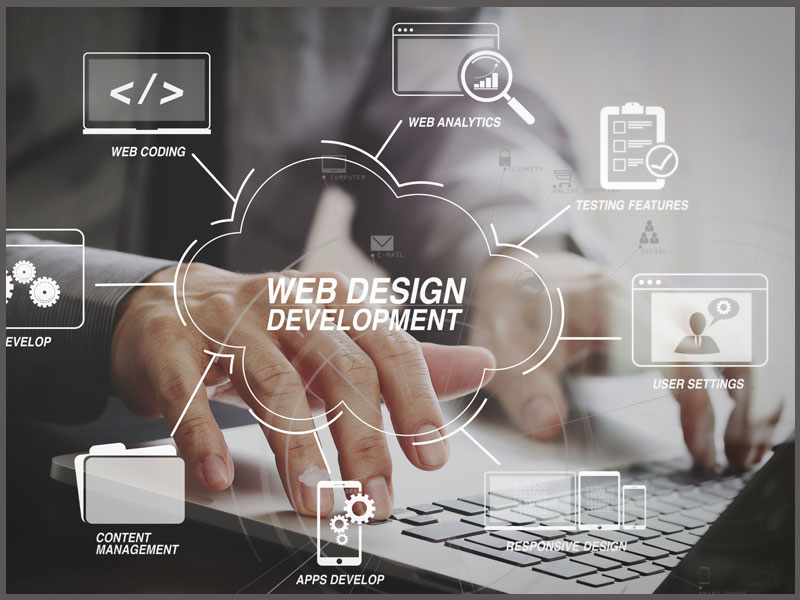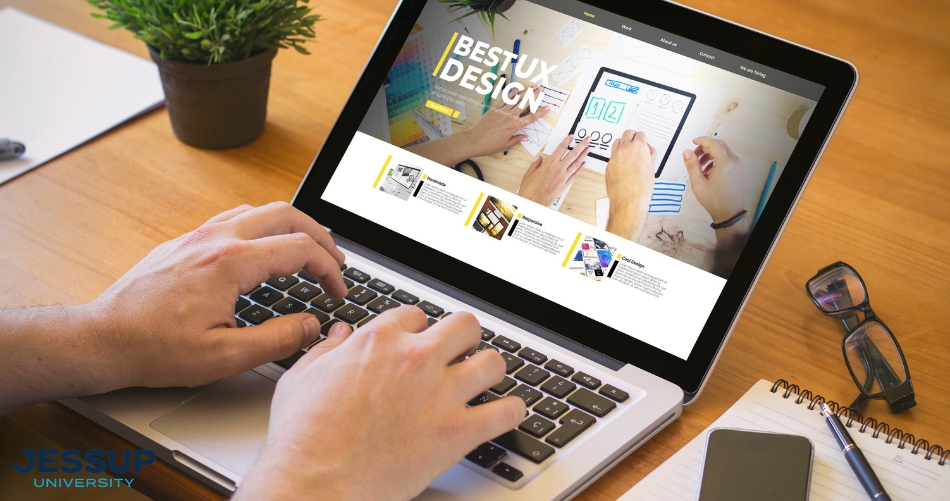Aligned Position Web Design: Transform Your Online Presence with Expert Web Design Services
Aligned Position Web Design: Transform Your Online Presence with Expert Web Design Services
Blog Article
The Most Effective Types of Web Design to Boost User Experience and Interaction
In the ever-evolving landscape of electronic communication, the effectiveness of Web layout substantially influences customer experience and involvement. Various design methods, such as minimal, receptive, and interactive formats, each deal unique advantages that can cater to diverse individual requirements.
Minimalist Website Design
As digital landscapes become increasingly cluttered, minimalist website design has actually arised as an effective technique to improving individual experience. This style viewpoint focuses on simpleness, concentrating on essential elements while removing unneeded diversions. By using adequate white area, simple navigation, and a minimal color combination, minimalist layout cultivates clearness and guides customer focus to crucial material.
The core principle of minimal Web design is to create a smooth communication for users. By reducing cognitive tons, users can promptly comprehend info without really feeling bewildered. This direct technique not only boosts functionality but additionally motivates involvement, as visitors are more most likely to check out a website that is simple and aesthetically enticing to browse.
Furthermore, minimalist layout usually highlights typography and imagery, using these elements purposefully to convey messages properly. This focus on essential elements can enhance brand name identification and produce a remarkable individual experience. Fundamentally, minimalist Web style is not simply a pattern; it is a thoughtful technique that recognizes the relevance of user-centered design. By removing additional components, designers can produce a more appealing, reliable, and enjoyable Web experience for all customers.
Responsive Web Style
In today's diverse electronic environment, receptive Web style has actually become crucial for creating a smooth user experience across a multitude of tools. As users gain access to websites on smart devices, desktop computers, laptops, and tablet computers, the ability of an internet site to adapt its format and content to various display dimensions and resolutions is important.
Receptive website design employs flexible grids, photos, and CSS media queries to guarantee that Web material is offered ideally, no matter of the gadget utilized. This method not only boosts the aesthetic charm of a site but also considerably improves usability. Customers are more probable to involve with a website that provides a consistent experience, as it eliminates the frustration of having to zoom in or scroll exceedingly.
In addition, internet search engine, consisting of Google, prioritize mobile-friendly websites in search positions. By embracing responsive style, businesses can improve their presence and reach a broader target market. This technique also streamlines web site maintenance, as a solitary version of the website can cater to all devices, lowering the requirement for multiple variations. In summary, receptive website design is a basic practice that boosts individual experience, engagement, and total contentment.
Interactive Web Style
Responsive website design lays the foundation for improving user experience, yet interactive Web layout takes this a step even more by involving customers in a much more dynamic way - Aligned Position Web Design. By integrating components such as animations, clickable prototypes, and real-time comments, interactive Web layout captivates individuals, attracting them right into a richer surfing experience
This method not just cultivates engagement yet likewise urges customers to explore material actively instead of passively eating it. Techniques such as gamification, where individuals gain rewards for finishing jobs, can substantially enhance the time invested on a site and improve general fulfillment. Interactive attributes can simplify complex information, making it more enjoyable and absorbable.

Incorporating interactive style components can likewise bring about higher conversion prices, as users are most likely to engage with a website that proactively entails them. Aligned Position Web Design. Ultimately, interactive website design transforms customer experiences into unforgettable journeys, ensuring that visitors return time after time
Apartment Layout
Characterized by its minimalistic strategy, level design emphasizes simplicity and performance, removing unnecessary aspects and concentrating on important functions. Home Page This style approach focuses on use, ensuring that individuals can browse user interfaces easily and effectiveness. By employing a tidy visual, flat design eliminates the clutter usually discovered in much more luxuriant styles, consequently improving user focus on content and capability.
The characteristic of level design hinges on its usage of vibrant shades, basic typography, and geometric forms. These aspects add to an aesthetically appealing interface that is both modern and friendly. In addition, flat layout fosters a sense of quality, permitting customers to recognize essential activities and details without interruption.
In addition, flat style is especially effective in responsive website design, as its simpleness equates well across various gadgets and display dimensions. The lack of intricate structures and gradients minimizes loading times, which is important for preserving customer engagement. As electronic landscapes remain to evolve, level style stays a pertinent selection for creating user-friendly internet sites that boost overall experience. By concentrating on necessary functions, flat layout not only fulfills individual needs however likewise motivates smooth communication, making it a crucial component of reliable Web layout techniques.
Flexible Website Design
Adaptive Web layout personalizes the user experience by producing several fixed layouts tailored to different screen dimensions and gadgets. Unlike responsive design, which fluidly readjusts a solitary format, adaptive style employs distinct designs for details breakpoints, ensuring optimum discussion on various platforms. This method permits designers to focus on the distinct characteristics of each tool, improving usability by supplying precisely what users require based upon their context.
Among the key advantages of flexible website design is its ability to optimize load times and performance. By offering tailored material and pictures that fit the individual's gadget, websites can reduce information usage and improve loading speeds. This is especially helpful for customers with slower links or minimal data strategies.

In addition, adaptive layout assists in a more regulated and consistent branding experience. Because developers create several formats, they can guarantee that the aesthetic elements line up with the brand name's identity across various systems - Aligned Position Web Design. This results in a cohesive individual experience, boosting engagement and advertising user retention
Final Thought
Minimal layout cultivates quality and emphasis, while receptive design ensures adaptability throughout numerous tools, advertising availability. Collectively, these design comes close to add to the development of easy to use atmospheres that not only improve satisfaction yet likewise drive higher conversion prices, emphasizing their check my blog important value in contemporary Web layout methods.

Minimalist design fosters clearness and focus, while recommended you read responsive style makes certain flexibility throughout numerous tools, promoting accessibility. Collectively, these style approaches contribute to the development of easy to use atmospheres that not just boost contentment yet additionally drive greater conversion prices, emphasizing their essential relevance in modern Web style methods.
Report this page